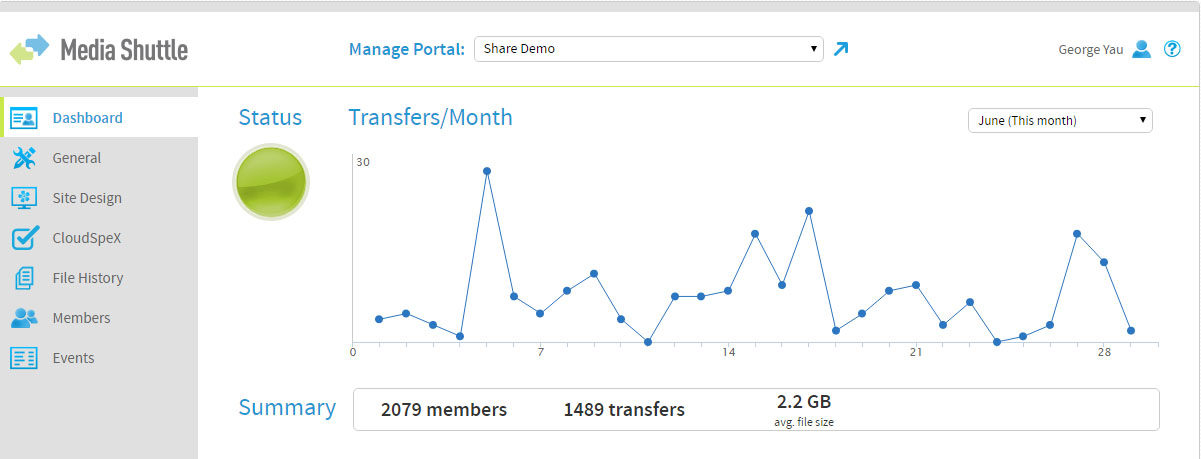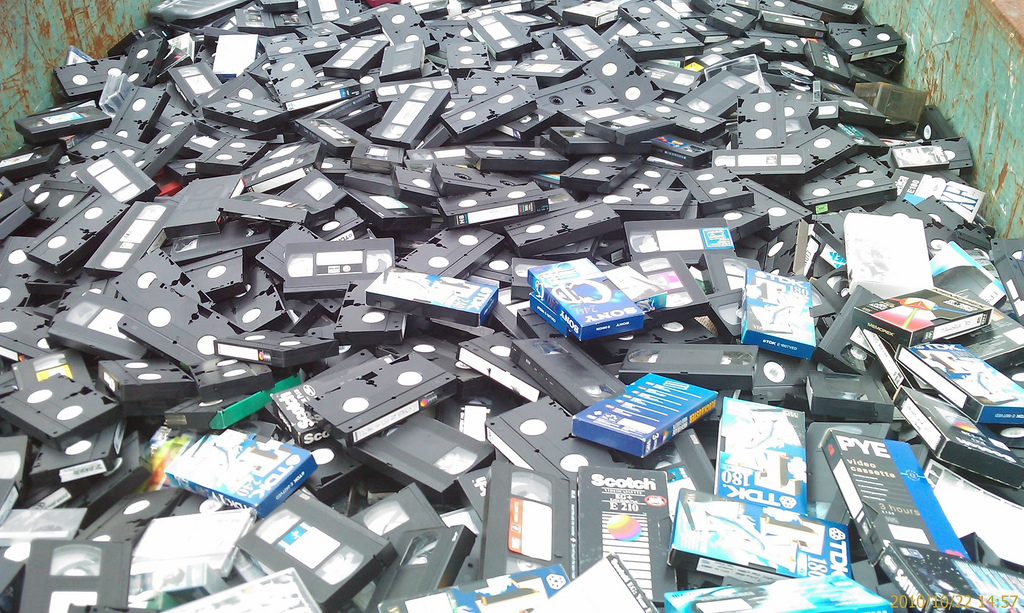video file transfer
-
 | Blog
| BlogHealthcare innovations prove AR and VR aren’t just for entertainment
As healthcare workers strive to fight off the current pandemic and keep themselves safe at the same time, AR and VR offer a range of solutions to problems both basic and complex. -
 | Blog
| BlogFrom raw video to proxy to mezzanine to final delivery, how many video formats are required in modern media production?
Video files are the lifeblood of most media companies but the sizes and wide variety of formats bring complexity. One of the most interesting (and challenging) things about working with video is the range of formats in which they appear and are used. Each different format has different strengths, as different formats are required at different phases of the production and distribution lifecycle. -
 | Blog
| BlogMedia Shuttle’s “Delegated Administration” Simplifies Tasks for Media Operations and IT
While we can’t remove all the complexity from an increasingly complex media world, with Media Shuttle’s delegated administration, we can make it easier for technical staff and operations managers to do their jobs. -
 | Blog
| BlogOctober 1st, 2017 – a Landmark Day in the Migration to File-based Delivery in the UK
The Digital Production Partnership (DPP), an industry organization comprising UK broadcasters BBC, BT Sport, Channel 4, Channel 5, ITV, Sky and UKTV, recently announced that as of October 1st its members will no longer accept delivery of programs on videotape. This is a real watershed moment in the transition from videotape to files as the primary medium for moving video content across the M&E supply chain. -
 | Blog
| BlogImagine downloading half a million one hour shows, in HD, from Netflix
Media Shuttle continues to evolve as we provide new features and capabilities, and one constant has always been our laser focus on ease of use, and support for ever more efficient workflows. But what it really all boils down to is how well the solution works for the users who actually send, receive and share files through the Media Shuttle portals. From this perspective, the breadth and depth of adoption and usage, and the rate at which these continue to grow, has been staggering. Check out some numbers from our current customers that speak louder than words. -
 | Blog
| BlogHow Discovery Moves Assets (and Producers) into the Cloud
Learn how the Discovery Communications technology team innovated its video processing by moving its systems to the cloud. -
 | Blog
| BlogThe Future of Sports Technology at SXSW
Perhaps more than any other genre, sport broadcasting is delivering content to an increasingly diverse audience that consumes content in an increasingly diverse way. -
| Blog
The DPP and the Democratization of Media
On October 1st of this year, the UK will host what is being called File Delivery Day, and on October 1st all broadcasters will begin to receive programming in digital format, no exceptions. If this seems like a sudden and drastic shift, it’s been a long time in the making. In September of 2013, a collective of UK based television companies and broadcasters called the Digital Production Partnership and championed by such giants as the BBC and ITV announced the transition, and its deadline–at which point broadcasters began to shift individually. -
| Media Coverage
Digital Production Buzz | Banff Film Festival Moves Massive Files Fast
On May 30th, 2013 Digital Production Buzz interviewed Woody MacPhail, Producer, and Luke Van Dyk, Head Engineer, both from the Banff Mountain Film and Book Festival highlighting how they are using Signiant’s Media Shuttle to collect submissions for their annual film festival. -
| Media Coverage
Creative Cow | LA-Based Venture 3D Selects Signiant Media Shuttle for Accelerated Delivery of Massive 3D Movie Files
Known for its conversion work on “Titanic 3D” and “The Chronicle’s of Narnia: The Voyage of the Dawn Treader,” Venture 3D is using Media Shuttle to deliver the film “Journey to the West: Conquering the Demons” directed by Stephen Chow of “Shaolin Soccer” and “Kung Fu Hustle” fame. Venture 3D’s business success on the project requires the ability to move massive files – sometimes 200-300 GB in a single transfer – to multiple entities across Asia. As such the company required a solution that would give their global partners access to large files without the administrative constraints of FTP. -
| Media Coverage
SVG | Maple Leafs Keep Fans Locked In With Improved Video Workflow Powered by Signiant, Dalet
“We embed producers with each of the teams: they travel on the team plane, they travel on the team bus, and they feed us back stories that we want to get turned around very quickly,” says Ed Holmes, director of engineering, MLSE. “We take the game and create what we call a Game in Six, which is a six-minute highlight package, [and] we integrate that with a lot of the feature things. I mean, we shoot on the bus, we shoot anywhere we can, [and] we try to get it back here to Toronto as quickly as possible.” -
| Media Coverage
Digital Media World | Film Festival Picks a Winner with Media Shuttle
“For previous festivals, we relied on free file sharing sites for digital film submissions. With finished file sizes exceeding 2Gb, filmmakers often experienced long upload times – up to three hours – and if transfers were interrupted for any reason, time was lost and they had to start all over again,” said Festival President Kevin Burton. “With 60 days to make their films, every minute counts.” In addition to submission of lower resolution judging versions of entries, Media Shuttle will be used to submit the final ProRes digital film versions for screening, instead of relying on couriers or in-person deliveries.





